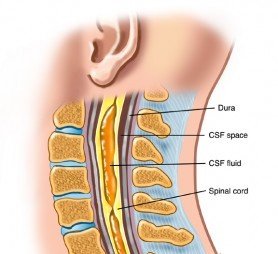Block vertebrae
Block vertebrae
Block vertebrae is a congenital or acquired spinal condition where two or more vertebrae are abnormally fused together, leading to restricted motion, spinal deformity, and in some cases, neurological complications due to pressure on the spinal cord or nerves. While many cases are discovered incidentally, block vertebrae can lead to scoliosis, kyphosis, torticollis, or nerve dysfunction in growing children. In Bangladesh, congenital spine abnormalities such as block vertebrae are often under-recognized due to limited awareness and lack of early screening. Thanks to increasing access to pediatric neurosurgical expertise, especially under Dr. Md. Nafaur Rahman—Assistant Professor of Pediatric Neurosurgery at the National Institute of Neurosciences & Hospital (NINS&H) and Chief Consultant at Bangladesh Paediatric Neurocare Centre—families across the country now have access to timely diagnosis, proper monitoring, and surgical correction when needed. 🧠 What Are Block Vertebrae? Block vertebrae result from abnormal segmentation of spinal vertebrae during fetal development (congenital) or may occur due to spinal infection, trauma, or surgery (acquired). Instead of forming separate, mobile bones, two or more vertebrae fuse into a single block of bone, limiting spinal motion and possibly disturbing spinal alignment. 🔍 Common locations affected: Cervical spine (neck) – can cause torticollis or reduced head mobility Thoracic spine – may lead to scoliosis or visible back curvature Lumbar spine – can cause lower back stiffness or imbalance Block vertebrae may be isolated or seen in association with syndromes like Klippel-Feil Syndrome, VACTERL Association, or other spinal anomalies like hemivertebrae and tethered cord. 🚸 Signs and Symptoms in Bangladeshi Children Children born with block vertebrae in Bangladesh may exhibit: Short, stiff neck or limited neck movement Torticollis (abnormal head posture) Visible spinal deformity or curvature Uneven shoulders or limb-length discrepancy Chronic neck or back pain Delayed motor development Neurological symptoms (weakness, numbness, balance problems) in severe cases Unfortunately, in many rural areas of Bangladesh, these symptoms are often misdiagnosed as postural defects or orthopedic conditions, delaying critical intervention. 🏥 Diagnosis of Block Vertebrae in Bangladesh At centers like NINS&H and Bangladesh Paediatric Neurocare Centre, a thorough diagnostic work-up is essential for treatment planning: ✅ Diagnostic tools include: Spine X-rays (AP and lateral) – to identify fused segments MRI – to evaluate spinal cord, nerve roots, and associated anomalies (e.g., syringomyelia, tethered cord) CT scan with 3D reconstruction – for detailed bony anatomy Whole-spine screening – to rule out scoliosis or kyphotic deformity Ultrasound of kidneys, heart – in syndromic cases like VACTERL ⚕️ Treatment of Block Vertebrae in Bangladesh Management depends on: Age of the child Location and extent of vertebral fusion Presence of spinal curvature or nerve symptoms Whether it’s congenital or acquired 🩺 Non-Surgical Management: Monitoring with annual imaging (if asymptomatic and non-progressive) Physiotherapy for neck/back mobility Postural correction and bracing (in early scoliosis) 🛠️ Surgical Treatment: Surgery is indicated when: There is progressive spinal deformity (scoliosis/kyphosis) The fused vertebrae cause instability or neurological symptoms There is associated tethered cord or cord compression The child’s growth is being affected 🚨 Surgical Options: Spinal cord decompression and fusion Instrumentation and correction of deformity Tethered cord release (if associated) Growth-friendly systems for younger children (e.g., VEPTR, growing rods) Dr. Nafaur Rahman has extensive experience in managing complex congenital spine disorders using child-specific implants, neuro-navigation, and intraoperative monitoring for safety and precision. ✅ Postoperative Recovery and Outcomes Following successful surgery: Spinal alignment improves Neck/back pain reduces Neurological function stabilizes or improves Deformity progression is halted Children resume normal schooling and physical activity with monitoring Regular follow-up with X-rays and neurological assessments are crucial, especially during the child’s growth years. 👨⚕️ Why Choose Dr. Md. Nafaur Rahman for Block Vertebrae Management in Bangladesh? 🎓 Assistant Professor, Pediatric Neurosurgery, NINS&H 🏥 Chief Consultant, Bangladesh Paediatric Neurocare Centre 🧠 Specialist in congenital spinal anomalies and complex deformity correction 🛠️ Uses cutting-edge techniques like 3D spinal planning, neuromonitoring, and pediatric instrumentation 🇧🇩 Widely trusted across Bangladesh for child-centered, compassionate, and evidence-based care 🌍 Serving Families Across Bangladesh Children with block vertebrae or suspected congenital spinal disorders are referred to Dr. Nafaur Rahman from all over Dhaka, Chattogram, Rajshahi, Khulna, Sylhet, Barisal, Mymensingh, and rural areas. Both in-person and teleconsultation services are available. 📞 Contact for Appointments & Referrals 📱 For Serial/Consultation: 📞 +8801912988182 📞 +8801607033535 🌐 Visit: www.neurosurgeonnafaur.com 📍 Clinics: National Institute of Neurosciences & Hospital (NINS&H), Dhaka Bangladesh Paediatric Neurocare Centre, Dhaka












